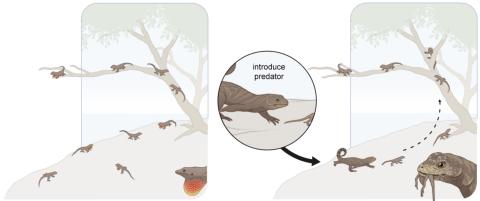image
A series of experiment spanning 40 years on small islands in the Bahamas have revealed how prey species, like small brown anole lizards (Anolis sagrei), evolve in response to predators. (Illustration: Mark Belan/ArtSciStudios)
Primary tabs

A series of experiment spanning 40 years on small islands in the Bahamas have revealed how prey species, like small brown anole lizards (Anolis sagrei), evolve in response to predators, like the larger curly-tailed lizard (Leiocepahlus carinatus). Importantly, due to the long-term nature of this research, scientists were able to track ecosystem changes in response to this predator-driven rapid evolution. (Illustration: Mark Belan/ArtSciStudios)
